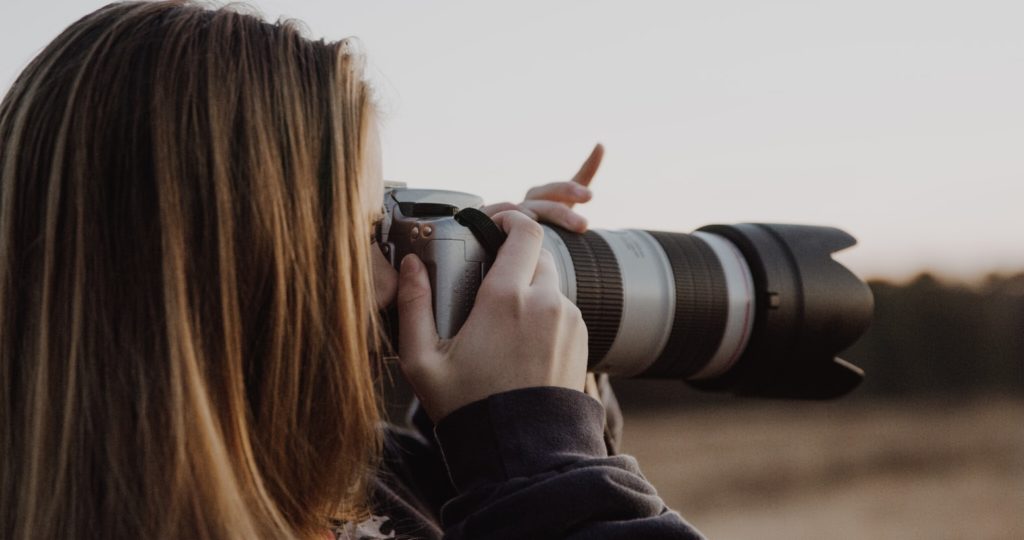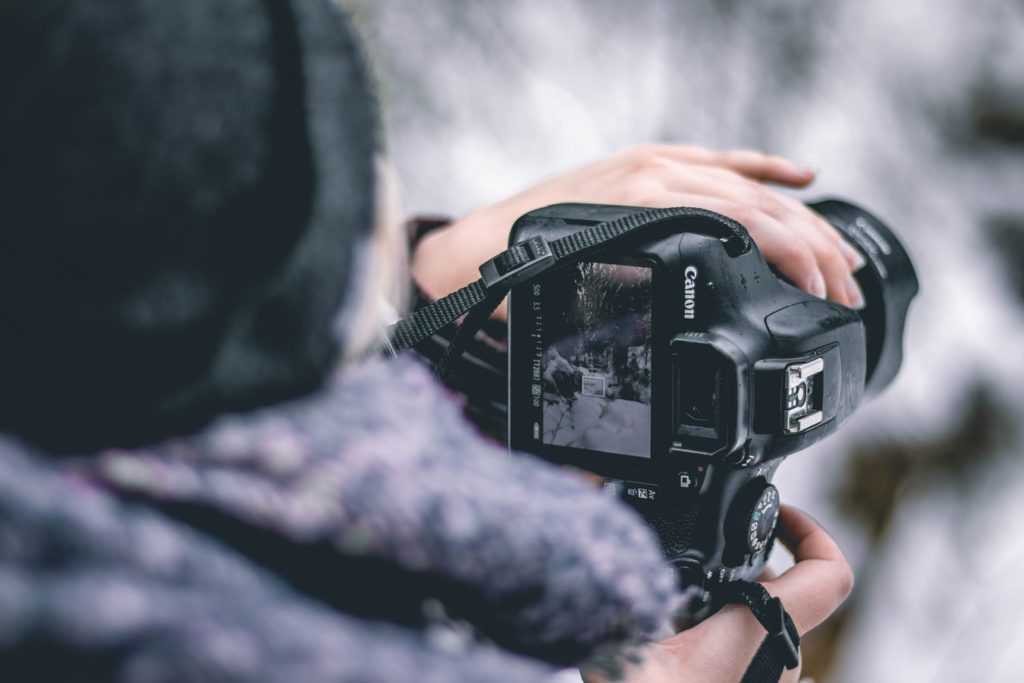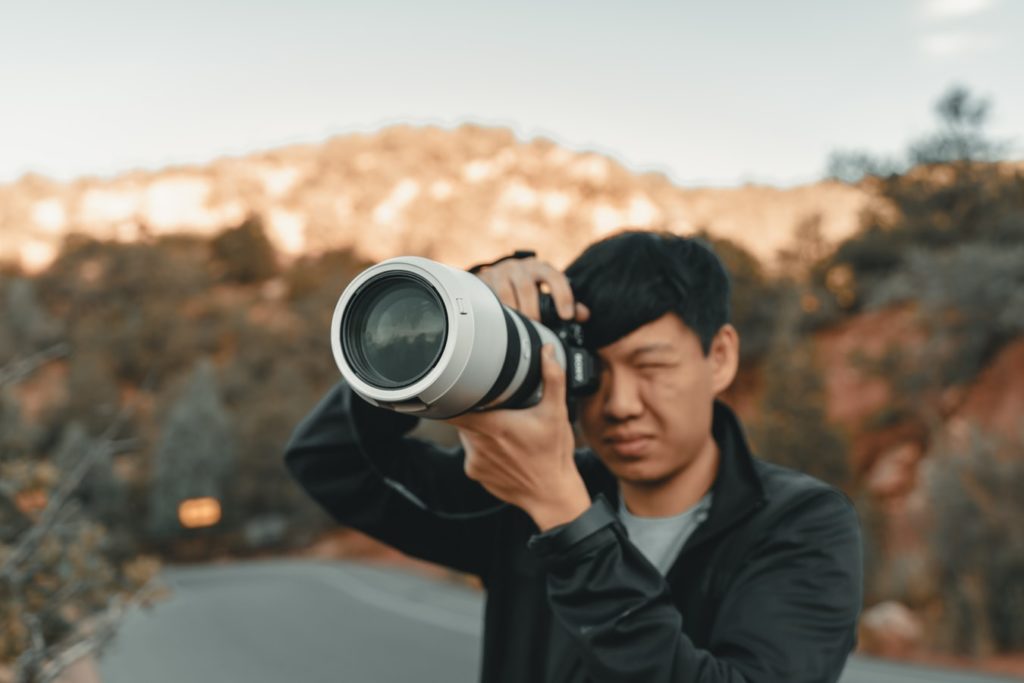Visual artists with an independent streak and desire to run their own business may find the work of a freelance photographer to be immensely rewarding.

Freelance photographers work as much as they want or need. They almost always operate with little to no supervision, which gives them tremendous personal discretion in how to approach a project. Potential assignments are limited only by the photographer’s imagination. Freelance photographers can find work shooting pictures at sporting events, weddings, fashion spreads in magazines, capturing images of wildlife, properties for sale by real estate firms, even taking pictures of food for use in restaurant menus and commercial advertising. This is by no means an exhaustive list.
Freelance photographers who develop their art and customer base can also make excellent money. Starting salaries tend to hover around the national average for all employment, according to the U.S. Bureau of Labor Statistics, but an ambitious freelance photographer who’s willing to work hard and produce stunning images can make well over six figures a year.
If photography is your passion and self-employment your dream, a career as a freelance photographer may be just the ticket to personal satisfaction. Read on to learn how you can get started as a freelance photographer.
In this article you’ll learn:
- How much money you can make as a freelance photographer
- The required training and certifications
- Professional groups to join
- Employment opportunities for freelance photographers
- Finding clients
- Plus helpful tips
How much money can you make?
The average freelance photographer hourly wage in the United States is currently $25.26, according to PayScale. That works out to about $48,500 annually, which is on par with the national average for all employment. Freelance photographers in the top 10 percent of the pay range are making more than $120 per hour. On a full-time basis that’s more than $230,000 per year. Because freelancers are by definition self-employed, your talent, ambition and work ethic will determine how much you make. There is no salary cap if you’re willing to put in the time and effort to grow your own business.

Training and Certification
There are no licensing requirements or formal certifications to become a freelance journalist. Clients for the most part will want to see a portfolio of your work and a track record of dependability (you’ll want to cultivate good references who can give you a recommendation).
While formal education is not required, a college degree in photography (bachelor of fine arts) can give you an edge on the competition because it shows you have the discipline and training to complete a 4-year educational program in your field. Lacking a college degree, you can take individual photography courses to improve your camera skills, composition techniques and even specific styles of photography, including sporting events, weddings, nature and wildlife, real estate, fashion and culture, food photography – really, any subject that can be enhanced with visual content.

Individual courses are available at community colleges, through the continuing education programs at universities and colleges, and are often taught by other photographers in the community. Check with camera shops to find out about upcoming local specialty courses in photography that might be off the radar for most people.
You can also find online photography courses covering every conceivable topic. Most of these courses are self-guided, meaning you complete them at your own pace. Some come with a certificate of completion that you can customize and download when you finish the course. It’s a great idea to promote any certifications you earn this way by listing them on your website and printed marketing materials. These accomplishments enhance your credibility as a professional photographer and can impress potential clients.
Professional Groups to Join
There are many professional photographers’ organizations you can join to network with other pros and advance your freelance photography career. Here are some of the most relevant to freelance photographers:

Professional Photographers of America is the premiere organization of photography pros in the United States. A full membership is open to anyone living in the United States or its territories and costs $323 per year.
Benefits include:
- $15,000 equipment insurance policy
- Data loss protection
- Access to all online education courses
- Online referral database listing
- Printed and digital monthly issues of Professional Photographer magazine
- One full registration to Imaging USA during the first year of membership
- Business Resources
- Contracts and Copyright Resources
- Access to Member Discount Program
- Weekly newsletter
National Press Photographers Association
This association offers professional memberships to photojournalists for $145 per year. The association advocates for the profession, monitors and reports on international conditions for photojournalists and offers networking opportunities for members.
American Photographic Artists
Benefits include a photographer photo ID card, discounts on Apple electronics, a listing in the association’s directory to help new clients find you, and more. Membership tiers range from $50 to $500 per year.
Employment
Contact newspapers, magazines and the editors of online sites devoted to photography. Send them your marketing materials, brochures and business cards. Follow up with a phone call in a day or two. If your contact says she’s already working with a photographer, ask if she knows anyone who needs your services. Don’t be discouraged by rejection when calling potential clients. The very next call you make could be gold.
Use the networking power of your professional memberships to find assignments.
Develop and maintain working relationships with publications in your area. If you capture a stunning image, you’ll already have contacts in the editorial department who may want to buy your photos as a local-interest item for their publications. You can also contact the advertising departments of those same publications as well as local ad agencies. These companies made need a photographer from time to time to help local business owners build an advertising campaign.
Finding Clients
Business cards and a basic website should be the core of your marketing toolkit as a freelance photographer. The website need not be fancy or expensive, just attractively designed, with photos of your best wildlife photography work, your business location and contact information. No need to include your pricing. You can discuss that directly with clients.

In addition to your business website, the next thing to do is create an Instagram account to showcase your photography. Instagram is the #1 online venue for creative professionals to display their work. It’s a free promotional tool that’s always working on your behalf.
Other strategies for attracting new business:
- Create a referral program with discounts for returning customers who bring new clients to you.
- Ask clients to review your services online. According to a recent survey, 90% of people say their buying decisions are influenced by positive online reviews.
Good to know
Freelancing in any field takes a strong disposition, determination and the self-confidence to succeed. It’s not a life for everybody. As a freelance photographer you get to be your own boss, set your own hours and take time off when you wish. But to make this work as a career and lifestyle, you still have to pay the bills. Here are tips gathered from other photographers on what it takes not only to survive but thrive as a freelancer.
Always be looking for clients.
When you’re not on an assignment you need to be hunting for more business. Once you build up a regular client base, use all your skills and talent to deliver images that keep them happy.
Read books on running a small business.
This will save you countless hours of wasted time and frustration by putting you on the road to profitability – and getting you faster to that destination.
Discover your photography niche.
Starting out, you may be tempted to accept every assignment offered to you. In fact, to maintain cash flow, that may be exactly what you’ll need to do. But over time you may start to prefer some types of assignments over others, or discover that you have a knack for wildlife photography compared to the relentless cheerfulness required of a wedding photographer. When you find a niche that you love, everything falls into place. It no longer seems like work.
Keep calling clients, new and long-term.
Fill your calendar with reminder notices to call clients on a set schedule to ask about their photography needs. While you might think some people would find this annoying, in truth most professionals are extremely busy people who appreciate a freelancer’s initiative. After all, you’re trying to help them.
Price higher at the beginning.
This may not seem to make sense for a beginner, but there’s a reason to set your prices higher. If clients protest your pricing or turn you down, ask them why. If they say it’s the expense, then you can negotiate and adjust. If you start out charging rock-bottom prices you risk working too hard for too little – and making yourself miserable as a result.

Buy the camera gear you need – and only what you need.
You probably already know that photography equipment is expensive, especially quality lenses. That doesn’t mean you need to equip a camera backpack in your first month as a working freelancer. Most likely, you’ll plunge yourself into debt. Instead, buy a good camera body and a couple of lenses. A standard 50mm and a telephoto lens are a good start. Add a set of inexpensive neutral density and polarizing filters, a flash attachment for the camera, and a couple of extra battery packs and spare memory cards. That’s plenty to get you started.
Stay active in your professional groups.
The best way to get free continuing education is to keep up with your professional memberships. Visit the online forums and interact with other pros who share their tips and techniques.
Build up a cash savings fund for the slow times.
Financial advisors often recommend having savings for six months of expenses available in an emergency. That’s a worthy goal, but any savings you can accumulate – and build on steadily – will be your salvation if you hit a couple of slow months with no work. Having a cash reserve means you’re not having to sell off camera equipment or take a part-time job to buy food or pay the rent.
Keep track of all your business expenses.
This includes travel and mileage. Save the receipts. It will help a lot at tax time.

Follow the client’s instructions.
If customers describe clearly what they want, don’t try to deliver something different – even if you think it’s better. Give clients the work product they asked for, and they’ll keep coming back. Once you’ve established a relationship you can begin to suggest other creative ways of getting the client’s images.
Practice.
Take your camera wherever you go and shoot lots of images. Hone your post-production skills in Photoshop or another image editing tool. Some photographers will tell you that Photoshop takes a lifetime to master. Not if you work with it an hour a day.
If you enjoyed this article, check out some more great PocketSuite.io content that can help you grow your career as a freelance photographer. Here’s a great place to start.PocketSuite has thousands of business owners who all started where you are right now. Our community is always happy to help you ramp up, grow your client base, and achieve your income goals, both within the PocketSuite app and as part of our exclusive Facebook Community Group. PocketSuite’s vision is for any professional to be able to work for themselves and make a great living. It starts here. It starts with you. It starts today. Let’s get started, download PocketSuite now! Feel free to reach out with any questions (we’d love to hear from you)! Text us @ (415) 841-2300.





